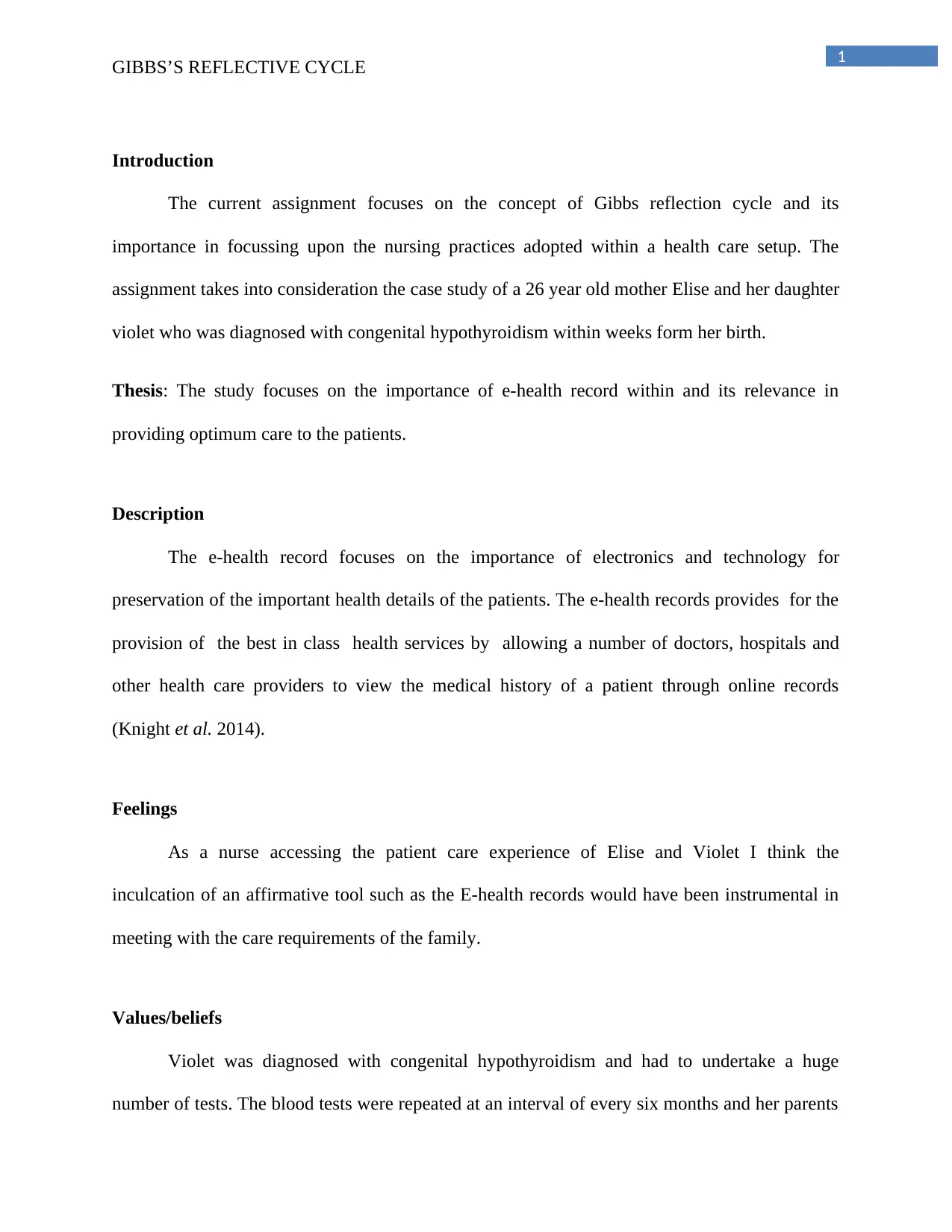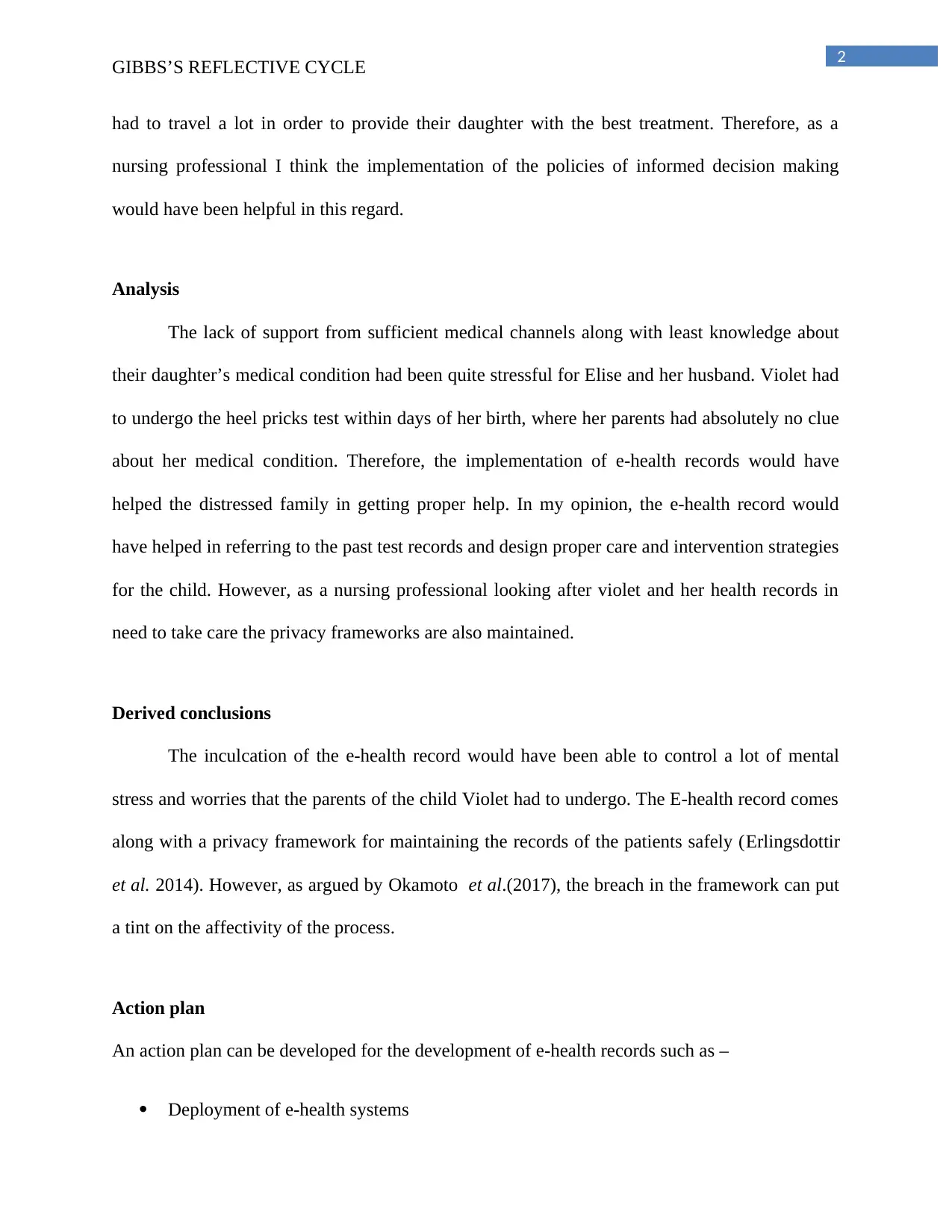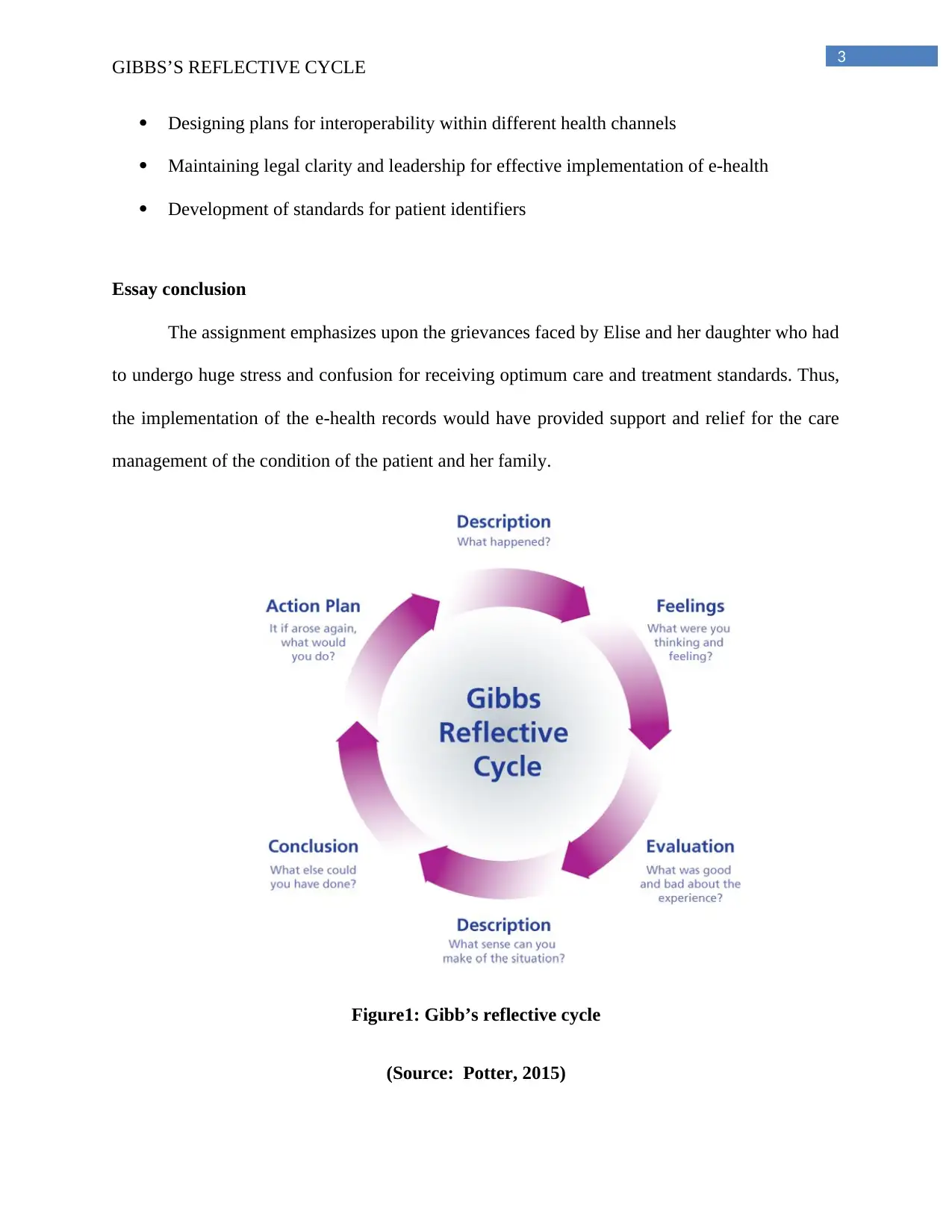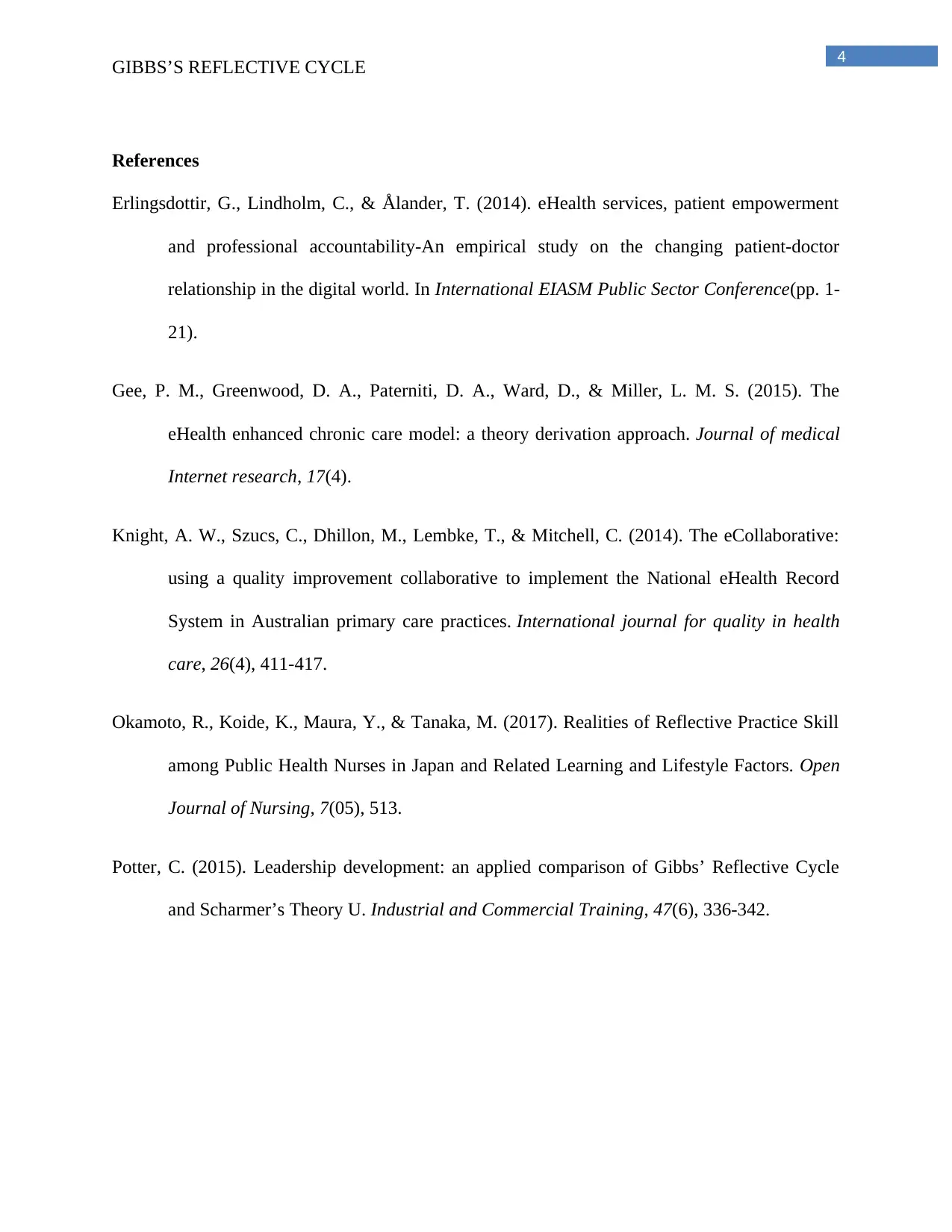Gibbs's Reflective Cycle: Case Study on Nursing Practice at University
VerifiedAdded on 2020/03/16
|5
|872
|77
Essay
AI Summary
This assignment applies Gibbs's Reflective Cycle to a nursing case study involving a 26-year-old mother, Elise, and her daughter Violet, who was diagnosed with congenital hypothyroidism. The essay emphasizes the importance of e-health records in providing optimal patient care. It describes the e-health record's role in preserving patient health details and facilitating access to medical history for healthcare providers. The assignment explores the feelings, values, and beliefs of a nurse accessing the patient care experience, highlighting the potential benefits of e-health records in addressing the challenges faced by Elise and her family. It analyzes the lack of support, medical knowledge, and stress experienced by the family, concluding that e-health records could have provided crucial assistance. The assignment proposes an action plan for developing e-health records, including deployment, interoperability, legal clarity, and standardized patient identifiers. The conclusion reinforces the benefits of e-health records in alleviating stress and improving care management, referencing relevant literature and a figure illustrating Gibbs's reflective cycle. This assignment provides a comprehensive overview of how reflective practice can improve nursing care.
1 out of 5












![[object Object]](/_next/static/media/star-bottom.7253800d.svg)